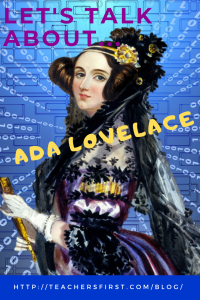 This week teachers all over the globe will have students participate in the “Hour Of Code” – an introduction to computer science. There are many ways to participate, both on and offline. Participating in coding activities helps students to develop computational thinking. According to Wikipedia, computational thinking is “a set of problem-solving methods that involve expressing problems and their solutions in ways that a computer could execute. It involves the mental skills and practices for 1) designing computations that get computers to do jobs for us, and 2) explaining and interpreting the world as a complex of information processes.”
This week teachers all over the globe will have students participate in the “Hour Of Code” – an introduction to computer science. There are many ways to participate, both on and offline. Participating in coding activities helps students to develop computational thinking. According to Wikipedia, computational thinking is “a set of problem-solving methods that involve expressing problems and their solutions in ways that a computer could execute. It involves the mental skills and practices for 1) designing computations that get computers to do jobs for us, and 2) explaining and interpreting the world as a complex of information processes.”
One of the first people to understand computational thinking was Ada Lovelace, the first computer programmer. Ada understood that a computer – once built – would need to follow a series of instructions in order to perform complex calculations. So she wrote a set of instructions. But who was Ada Lovelace really, and how did she stumble on computer programming?
Born on December 10, 1815, Augusta Ada King was the Countess of Lovelace. Her father, Lord Byron, was a poet. Her mother, Lady Byron, loved math and science and made sure that Ada had private tutors who would teach those disciplines. In a time when women were not typically seen as intellectuals, Lovelace spent her time with the elite of London society who occupied themselves with academic pursuits.
When a professor at Cambridge who was a friend and mentor designed a calculating machine, Ada studied it. She understood both the plans for the machine as well as a variety of tasks that it would be capable of. In the article that she wrote in 1843 about the “Analytical Engine,” Lovelace included an algorithm for having the machine complete advanced calculations. Ada understood that if something could be represented by numbers, then it could be changed by a computer that had the correct programming. Ada Lovelace was a pioneer very much ahead of her time.
As we take time this week to have students learn about computer science and programming, let’s use the story of Ada Lovelace to inspire girls and other students who typically do not pursue STEM careers.

